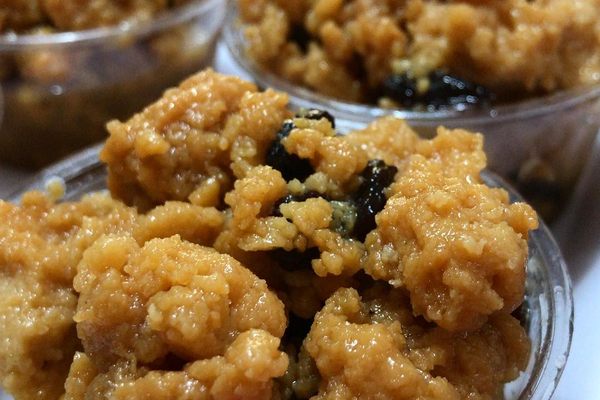Ingredients & Condiments
Kapeshuna Beans
In the desert of La Guajira, Colombia, locally grown cowpeas hold spiritual meaning for the Wayúu tribe.
On the northeastern part of the Colombian Caribbean coast, La Guajira occupies most of the desert plains of the Guajira Peninsula bordering Venezuela. Here, at the northern tip of South America, the arid terrain gets scant reprieve from the turquoise ribbon of the Caribbean Sea. But on this beautiful, unspoiled landscape, the indigenous Wayúu tribe has been fighting for centuries to protect their traditions and cultural heritage from erosion, first from the onslaught of colonialism, and now, from rapidly-encroaching globalized modernity.
The Wayúu survive on local industries of craftsmanship (their woven textiles and bags, in traditional designs, are well-known), animal husbandry, and agriculture. The parched terrain of La Guajira is largely not conducive to agriculture but the cowpea grows well on its soil, and is a revered dietary staple. Known locally as kapeshuna, the cowpeas of La Guajira come in several varieties: small mottled pods in gray, red, bluish gray, brown, and white. Planting season occurs right before the rainy months, which fall between March and October. Wayúu men dig furrows in the soil and the women and children follow, scattering a handful of seeds in each furrow. The tribe believes that the union of Juyakai (the male spirit of rain) and Pulowi (the female spirit of drought) causes the beans to grow. On auspicious occasions celebrating rites of passage, such as after a Wayúu girl has had her first period, the high-protein beans are made into a rich stew called poy, which is cooked with corn and lamb fat.
The beans have recently caught the attention of fine dining chefs, and Michelin-star establishments in Bogotá occasionally serve them. At Leo, chef Leonor Espinosa earned raves for a much-vaunted kapeshuna bean truffle made with with locally sourced anise and a local fruit known as the jumbalin. The dish, though no longer on offer, was said to evoke the smooth texture and honeyed flavor of foie gras.
Written By
 Rohini Chaki
Rohini Chaki













